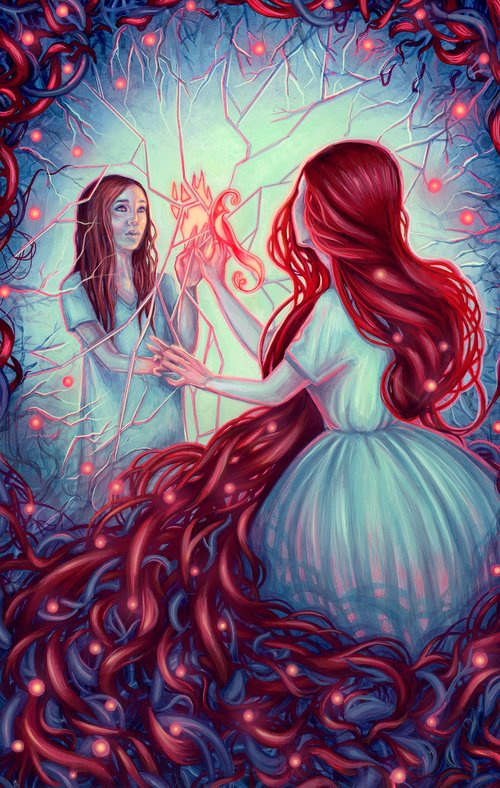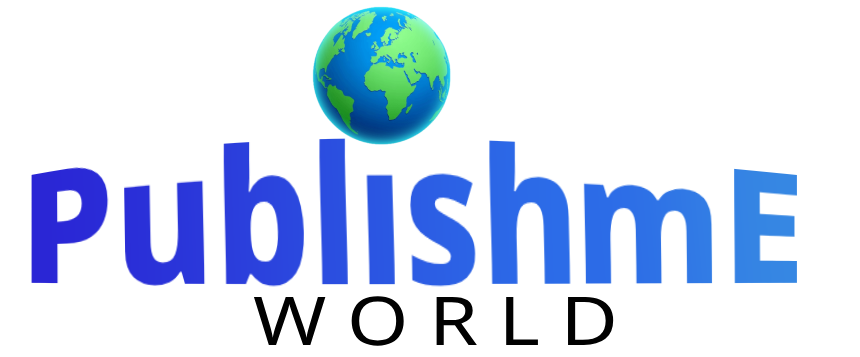The world of art has been shaken by an unexpected adversary: artificial intelligence. Artists, who pour their hearts and souls into their creations, are now facing a new kind of threat – the exploitation of their artwork by unregulated AI systems. Kelly McKernan, a talented watercolor and acrylic illustrator from Tennessee, stumbled upon this alarming revelation. She was astonished to find her artwork on a website named “Have I Been Trained,” which curiously searched for a dataset called LAION. This dataset, as she discovered, fueled various AI image generators, including the notorious Stable Diffusion.

Contents
- 1 A Disturbing New Context
- 2 Uniting Against Exploitation
- 3 Artists as Advocates: The Birth of a Guild
- 4 The Copyright Conundrum
- 5 Global Responses: Paving the Way for Change
- 6 Artists Arming Themselves: Watermarks and Glaze
- 7 A Glimmer of Hope
- 8 Is AI Bad For Artists
- 9 Is Generative AI Stealing From Artists?
- 10 AI learned from their work. Now they want compensation.
A Disturbing New Context
For McKernan, this discovery marked a turning point in her relationship with her own art. More than 50 of her unique pieces had found their way into the clutches of AI algorithms. Suddenly, her creations held a different context, and their meaning had been twisted by algorithms. This experience left McKernan and countless other artists feeling violated and disheartened. Their creations, once a reflection of their inner worlds, were now being exploited for commercial purposes without consent, knowledge, or compensation.
Uniting Against Exploitation
To combat this emerging threat, Kelly McKernan joined forces with fellow artists Sarah Anderson, a cartoonist, and Karla Ortiz, an illustrator. They took a bold step and filed a lawsuit against Stability AI, the company responsible for AI generators like Stable Diffusion and platforms like Midjourney and DeviantArt. This lawsuit joins a growing chorus of legal actions aimed at addressing copyright concerns in the face of unregulated AI.
Artists as Advocates: The Birth of a Guild
Eva Toorenent, an artist known for her specialization in creature design, monsters, and fantasy illustrations, shared similar anxieties. After witnessing an artwork eerily similar to her own in a gallery, she decided it was time to take action. Collaborating with five other like-minded artists, Eva spearheaded the establishment of the European Guild of Artificial Intelligence Regulation. Their mission? Advocate for comprehensive legislation and regulation that will protect copyright holders and artists from the clutches of predatory AI entities.
The Copyright Conundrum
The artists’ collective demand for increased regulation and protection is not unfounded. The existing copyright framework often falters when dealing with the intricate challenges posed by generative AI. Artists might receive a one-time payment for their work, while AI models can replicate and reuse their creations indefinitely, without compensating the original creators. Organizations like Equity, a prominent performing arts and entertainment union, recognize the existential threat AI poses to artists’ livelihoods and are rallying for amendments to the Copyright Act to bridge these glaring disparities.
Global Responses: Paving the Way for Change
Internationally, responses to the growing concern over AI’s impact on artists’ rights are gaining traction. In the forefront is the EU AI Act, which proposes stringent measures for AI tools. This includes a mandate for disclosing any copyrighted material used in their training data. Meanwhile, the UK is gearing up for a global summit on AI safety, signaling a concerted effort to address the intricate labyrinth of AI and copyright issues.
Artists Arming Themselves: Watermarks and Glaze
As the legal and regulatory wheels turn, some artists have taken matters into their own hands. Getty Images, a renowned platform for stock images, has innovatively begun watermarking its images. This clever move enables them to monitor the usage of their artworks, even within the realm of AI-generated content. Meanwhile, a ray of technological hope emerges from the University of Chicago in the form of Glaze. Developed by Ben Zhao and his team, this free software tool acts as a shield for artists, altering images in a way that befuddles AI models, rendering their mimicry futile and unappealing.
A Glimmer of Hope
Despite the initial fears and challenges, artists are beginning to witness a shift in public opinion. With their united front and growing support networks, they find themselves on a trajectory toward securing enhanced protection for their creative endeavors and just compensation for their contributions. The fight against unregulated AI and the quest for copyright protection is far from over. Artists and industry professionals are resolutely steering toward a future where the world of artificial intelligence is balanced by fairness, equity, and the enduring spirit of human creativity.
Is AI Bad For Artists

The impact of AI on artists is a nuanced topic that doesn’t have a blanket “good” or “bad” answer. AI has the potential to both benefit and challenge artists in various ways. Let’s explore both sides:
Positive Aspects of AI for Artists:
Enhanced Creativity and Productivity: AI tools can assist artists by generating ideas, suggesting compositions, and even creating preliminary drafts. This can free up artists’ time and mental energy for more intricate and creative aspects of their work.
Efficient Repetitive Tasks: AI can handle repetitive tasks such as resizing, retouching, or formatting, allowing artists to focus on the more imaginative aspects of their work.
New Creative Possibilities: AI-generated art can be a source of inspiration for artists, sparking new ideas and creative directions that they might not have explored otherwise.
Accessibility: AI tools can make creative expression more accessible to individuals who may not have traditional artistic skills. This inclusivity can lead to a broader range of voices in the art world.
Collaboration: Artists can collaborate with AI algorithms, producing innovative and thought-provoking pieces that merge human creativity with machine-generated elements.
Challenges and Concerns:
Copyright and Ownership: As discussed in the previous content, artists can face issues of unauthorized use and exploitation of their work by AI systems, which can potentially devalue their creations.
Loss of Uniqueness: With AI-generated art becoming more prevalent, there’s a concern that originality and uniqueness in the art world might be diluted, making it harder for individual artists to stand out.
Dependency on Algorithms: Relying heavily on AI tools could lead to a decreased emphasis on human skill and intuition, potentially impacting the development of an artist’s personal style.
Erosion of Artistic Authenticity: Some argue that AI-generated art lacks the emotional depth, intention, and authenticity that human-created art often embodies.
Economic Implications: If AI-generated art gains popularity and is perceived as valuable, it might alter traditional art markets and income streams for artists.
In summary, whether AI is “bad” for artists depends on how it’s used, the intentions behind its usage, and how artists adapt to its presence. AI can be a powerful tool that empowers artists and opens up new creative avenues, but it also introduces challenges related to ownership, originality, and the role of human creativity. The key lies in finding a balance where AI complements and enhances artistic expression without overshadowing the human touch and the values that art represents.
Is Generative AI Stealing From Artists?
Generative AI itself doesn’t have the intention to steal from artists, as it lacks consciousness or intent. However, the use of generative AI in certain contexts can lead to unintended consequences that feel like theft or exploitation for artists. Let’s explore this issue in more detail:
Generative AI involves training algorithms on large datasets to create new content that mimics the patterns and styles found in the training data. This can include creating art, music, writing, and more. Here are some scenarios where it might feel like generative AI is “stealing” from artists:
Unauthorized Use: If an AI system is trained on an artist’s work without their permission or proper attribution, and then generates new content that closely resembles the artist’s style, it can give the impression that the AI is “stealing” the artist’s creative identity.
Commercial Exploitation: If AI-generated content is used for commercial purposes without proper compensation to the original artist, it can feel like a form of theft. The artist’s work is being utilized to generate profit, but the artist themselves might not receive any benefit.
Dilution of Value: When AI generates content that’s highly similar to an artist’s original work, it can lead to the devaluation of the artist’s creations. If audiences can easily find similar AI-generated content, the uniqueness and value of the artist’s original pieces might be undermined.
Lack of Attribution: If AI-generated content is shared or distributed without attributing the original artist or acknowledging the AI’s role in the creation, it can obscure the source of inspiration and contribute to the feeling of theft.
Challenging Originality: AI can create works that resemble existing art, potentially leading to questions of originality and authenticity. This can affect an artist’s ability to establish their own distinct style and voice.
It’s important to note that the use of generative AI doesn’t inherently steal from artists. It’s the misuse or lack of ethical considerations around AI-generated content that can lead to situations resembling theft. Ethical practices should be followed, such as obtaining proper permissions, attributions, and compensations when using AI to create content based on existing artistic works.
As the discussion around AI and creative content continues to evolve, it’s crucial for artists, AI developers, legal experts, and policymakers to collaboratively address these concerns and establish guidelines that ensure fair treatment, attribution, and compensation for all parties involved.
AI learned from their work. Now they want compensation.
The demand for compensation from AI-generated content that has learned from artists’ work is a complex and evolving issue. This situation raises questions about the relationship between AI, creativity, ownership, and compensation. Let’s delve into some key points surrounding this topic:
Ownership of AI-Generated Content:
Derivative Work: AI-generated content that is trained on existing art can be seen as a derivative work. While AI itself doesn’t create with intention or consciousness, it uses patterns learned from existing content to produce new output.
Creative Input: Artists’ original work contributes significantly to the training data that AI relies on. This raises arguments for compensating artists for their indirect creative input in the AI’s learning process.
Compensation Considerations:
Intellectual Contribution: Artists argue that their work contributes to the AI’s ability to create appealing content, making their role in the AI’s output significant enough to merit compensation.
Loss of Exclusivity: AI-generated content can resemble an artist’s original work, potentially impacting the exclusivity of their style and diminishing the value of their creations.
Monetary Gains: If AI-generated art gains popularity and is monetized, artists who unknowingly contributed to the AI’s training data might feel entitled to a share of the generated revenue.
Challenges and Implications:
AI’s Role: Determining the extent to which AI’s contribution is responsible for the final output compared to the artists’ original work can be challenging.
Ethical Dilemma: While artists have a right to demand compensation, it’s important to consider that AI-generated content isn’t a direct result of conscious artistic effort.
Legal Frameworks: Existing copyright laws might not explicitly cover compensation for AI-generated content, requiring potential adaptations or new regulations.
Potential Solutions:
Attribution and Recognition: If AI-generated content is based on an artist’s work, proper attribution could be a way to recognize the artist’s contribution.
Licensing Agreements: Artists might consider licensing their work to AI developers under specific terms, which could involve compensation for AI-generated outputs.
Negotiation and Collaboration: Artists, AI developers, and legal experts could collaborate to create frameworks that ensure artists are fairly compensated while acknowledging the unique nature of AI-generated content.
Future Pathways:
As AI technology and its relationship with creative works continue to evolve, finding a balance between compensating artists and understanding the distinctive nature of AI’s output is crucial. Open dialogue, ethical considerations, and legal adaptations will play pivotal roles in shaping a future where artists’ contributions are acknowledged, and fair compensation mechanisms are established for the age of AI-generated content.
